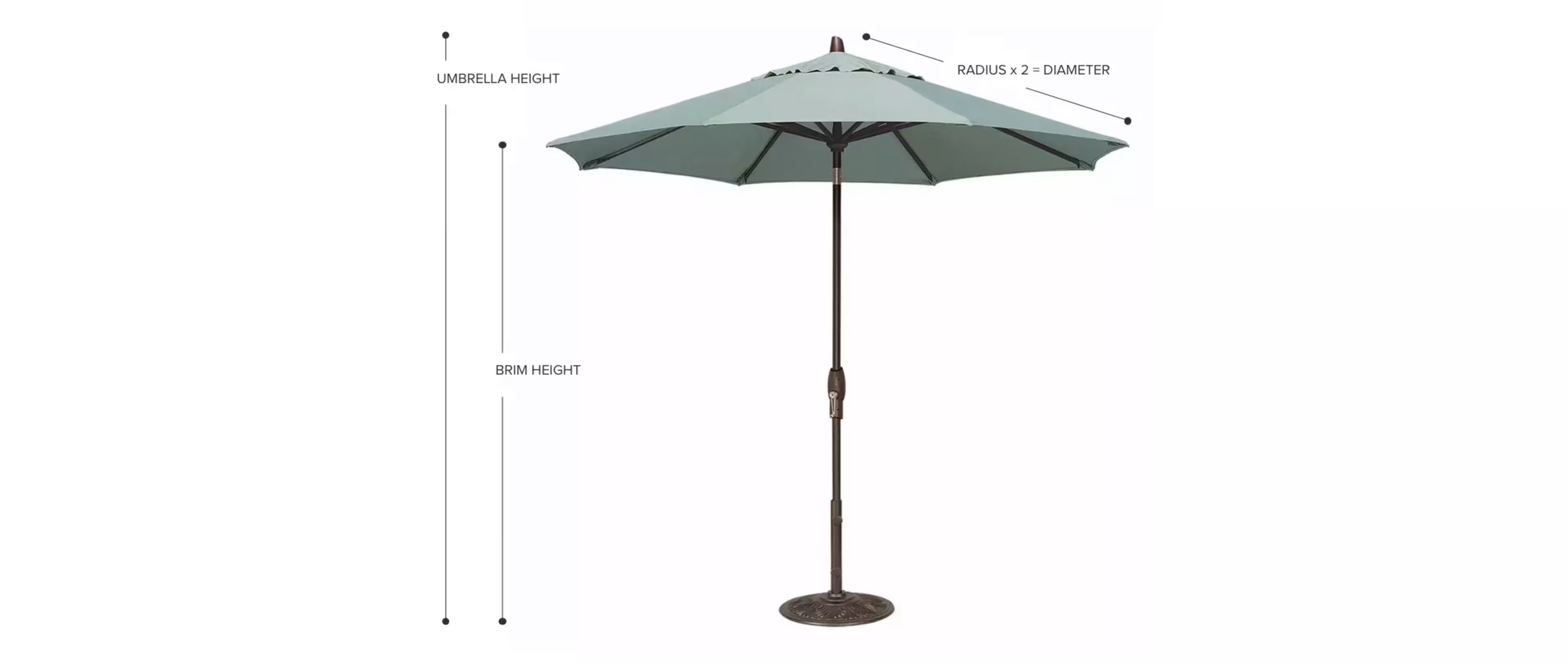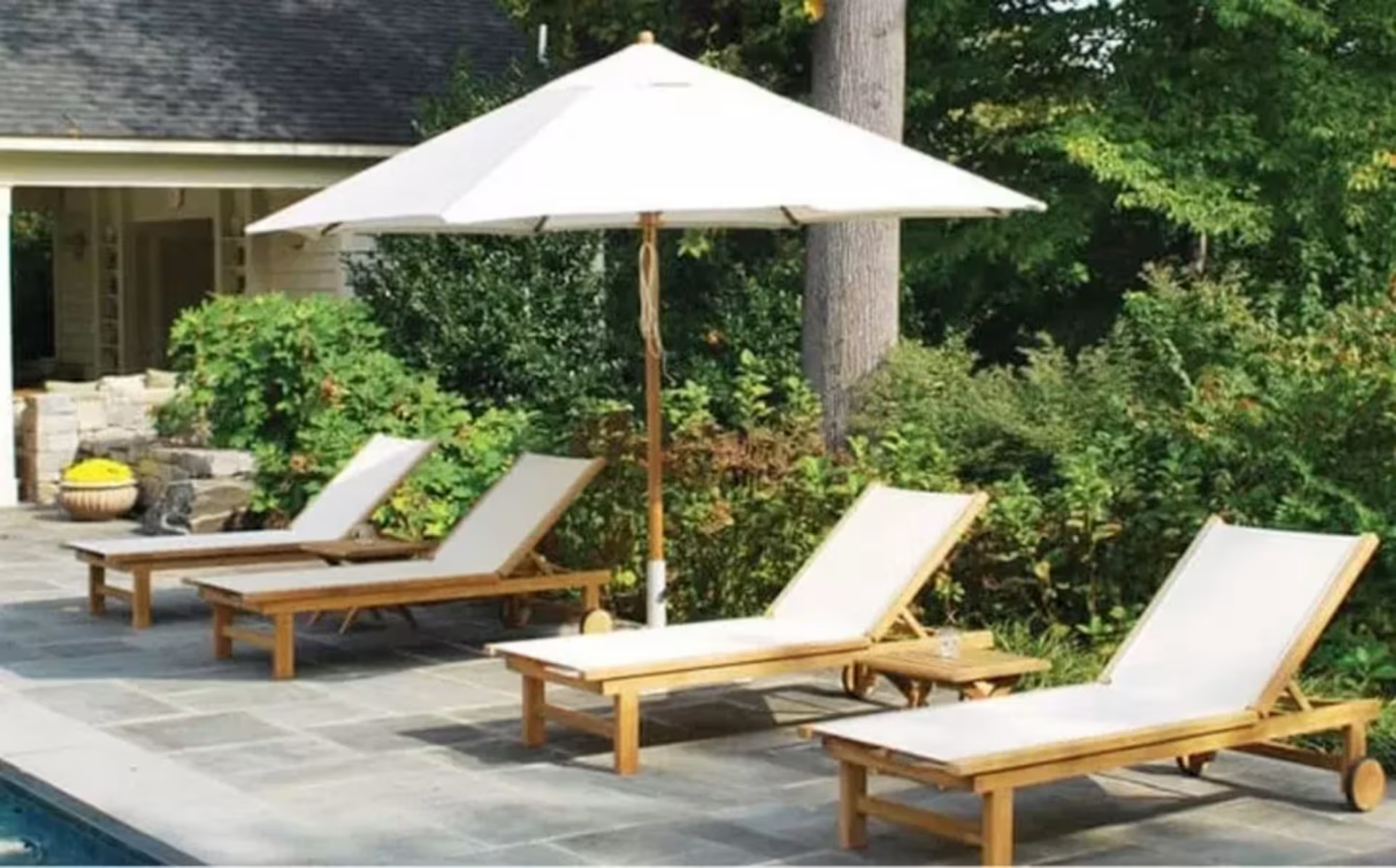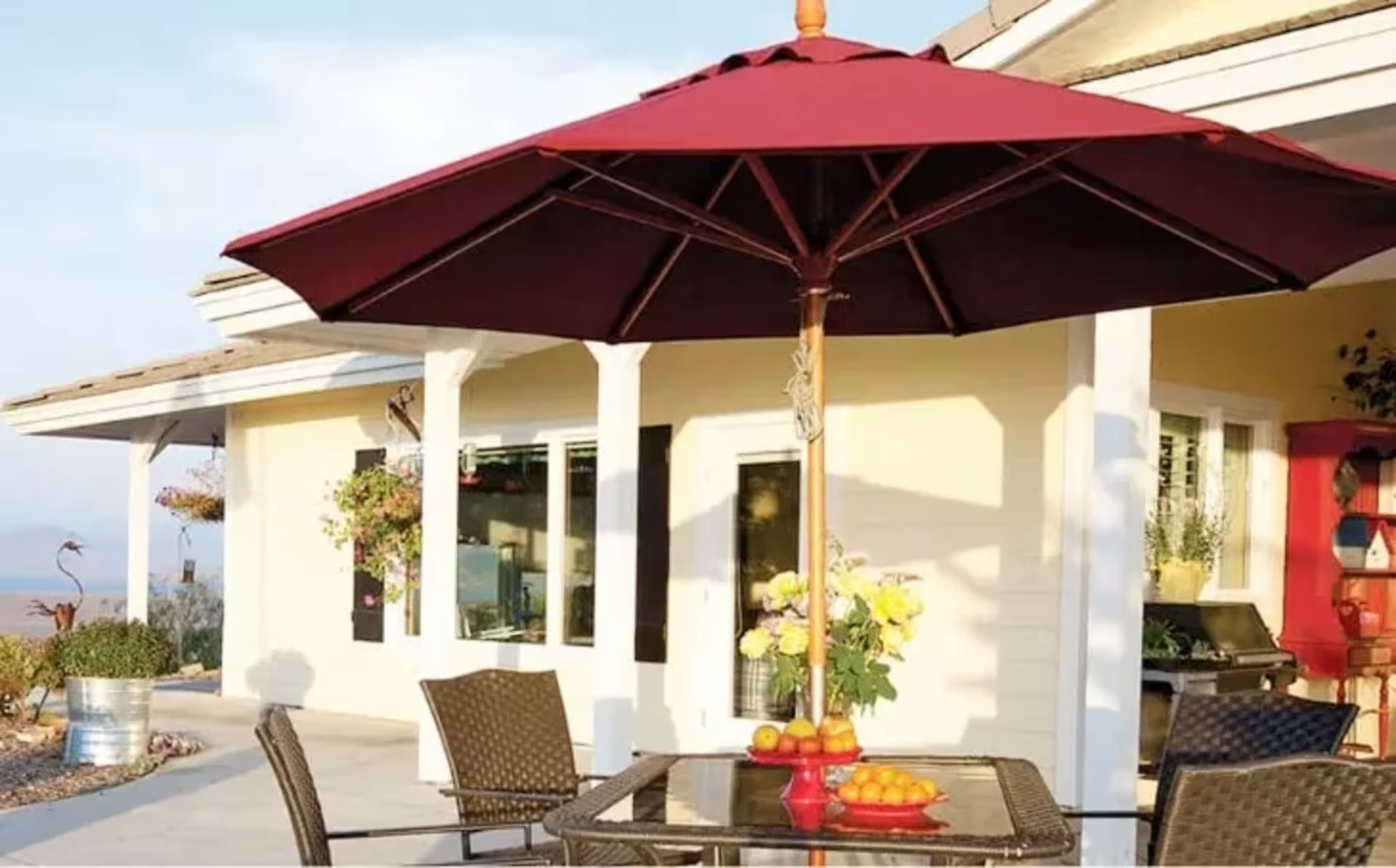Let's Make it (Email) Official
Become an AuthenTEAK Insider and be first to know about new collections, exclusive sales, and special offers.
Let's Make it (Email) Official
Become an AuthenTEAK Insider and be first to know about new collections, exclusive sales, and special offers.

The right patio umbrella will extend the life of your outdoor space, keeping things cool and protected from the sun or rain. So what kind of patio umbrella should you choose? There are many factors to consider (size, shape, style, material, functionality) before making a decision. Here, we’re breaking down how to buy an outdoor umbrella, as well as how to measure for a patio umbrella.
When learning how to buy an outdoor umbrella, it’s first important to know the makeup of a patio umbrella and why each component is important.

The fabric which provides shade and defines the umbrella shape.
A decorative piece at the top of an umbrella that helps secure the canopy to the frame.
A layer of fabric on top of the canopy that allows air flow. There are single-wind vents (SWV) and double-wind vents (DWV). SWV are the most common; DWV are typically used for high-wind environments (think rooftops or the beach) or on large umbrellas where the extra vent can help keep the canopy stable. In very hot environments, a DWV allows hot air under the umbrella to escape, keeping temps cool below the canopy.
Slender, pliable pieces that support the fabric canopy, typically made from metal, wood, or flexible fiberglass. Generally, the more ribs, the stronger the umbrella. There are two types of ribs: main ribs, which attach to the top of the umbrella frame and extend to the edges of the canopy, and support ribs, which connect to the underside of the main ribs and help with opening and closing the canopy.
A ringed mechanism that works together with the ribs, connecting them at a center point.
On some umbrellas, a framework that allows the canopy to be angled, maintaining direct shade throughout the day.
The canopy’s main support, the pole determines umbrella height while providing structure and support. Poles consist of either two pieces joined together or (preferred for commercial applications) a single, long pole. Pole diameters range from 1.5 to 2.5 inches.
Contains the main cord used to open and close the umbrella.
Used to operate the crank housing. Typically made from metal.
Also known as the base stem, this is a hollow tube, affixed to a weighted umbrella base, that helps secure the umbrella frame to the base.
Small knob on the base stem that secures the umbrella pole to the base.
A heavy base—typically made of aluminum, steel, concrete, granite, or sand-filled plastic—that prevents the umbrella from moving or falling over. Available with or without wheels, in a variety of shapes.
If you’re wondering how to buy an outdoor umbrella, consider style first. Patio umbrellas are available in three distinct styles: market, cantilever, and tilting umbrellas.
When deciding on a canopy shape, consider the size of your outdoor space,your ideal amount of shade coverage, and personal style preference.
How big should a patio umbrella be? It depends on your space. Make sure to buy a patio umbrella that provides enough shade to protect against sun and moisture without overwhelming the space. A good rule of thumb: your umbrella’s canopy should extend approximately two feet past the table’s edge or desired coverage area. Here’s a breakdown of how to measure for a patio umbrella:
One of the best tips for how to buy a patio umbrella: consider the fabric. The best fabric for your outdoor umbrella depends on a variety of factors, including your budget, space, and climate. The most common canopy fabrics are acrylic, polyester, and olefin.
Tip: Look for 100-percent solution-dyed acrylic, which means that the color is saturated throughout the fabric rather than printed on top.
In addition to the overall aesthetic, pole and frame materials determine the strength and weather-resistance of your umbrella. When looking for materials, ask yourself the following questions: What type of frame is best for your location and climate? What size space is the umbrella shading? What materials are the surrounding furniture? Here’s the lowdown on each material type:
Different umbrella operating mechanisms suit different needs. Some of the most common umbrella mechanisms are below:
Lift type is the method used to open and close an umbrella’s canopy.
Properly securing your umbrella to withstand winds and weather changes is crucial. Patio umbrellas can be secured by either a traditional base (which can sometimes have wheels) or a mount, which stabilizes an umbrella in a fixed place. Fixed mounts are generally only used with large cantilever umbrellas.
Need a replacement? Replacing a canopy or frame is a great way to extend the life of your umbrella, or easily update its color or style. Keep in mind that canopies and frames are often brand-specific, and when ordering a replacement, you’ll want to know your existing umbrella’s brand, model, size, and (for canopies) the shape and number of ribs.



Finish the look and extend the life of your outdoor umbrella with accessories and add-ons.
Once you’ve mastered how to buy an outdoor umbrella, it’s important to maintain its quality. To extend the life of your umbrella and keep it looking and functioning its best, follow these maintenance and care guidelines.
Categories
Recent Posts